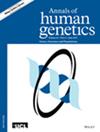Causal Effects of Inflammatory Cytokines on Urethral Stricture Disease: A Bidirectional Mendelian Randomization Study
Abstract
Background
Inflammation has been reported to be associated with urethral stricture, whereas rarely any studies have reported the causal relationship between inflammatory cytokines and urethral stricture. We investigated the causal effects between inflammatory cytokines and urethral stricture with Mendelian randomization (MR).
Methods
Genome-wide association study (GWAS) summary statistics on 41 inflammatory cytokines from 8293 Finns and 787 patients with urethral stricture were included for bidirectional MR analysis. The causality between inflammatory cytokines and urethral stricture was estimated using inverse variance weighting (IVW), weighted median, and model selection. Multiple sensitivity analyses (including pleiotropy, heterogeneity, and leave-one-out tests) were performed to evaluate the robustness and dependability of the MR results, followed by Bayesian colocalization, phenotype scanning, and protein–protein interaction (PPI) analysis.
Results
We identified a significant causal relationship between three inflammatory cytokines (granulocyte colony-stimulating factor [GCSF], stem cell growth factor beta [SCGFb], and interleukin-5 [IL5]) and urethral stricture. GCSF (odds ratio [OR] = 4.722, 95% confidence interval [CI] = 1.367–16.303, p = 0.014) and SCGFb (OR = 1.209, 95% CI = 1.06–1.379, p = 0.004) increased the risk of urethral stricture, whereas IL5 decreased the risk of urethral stricture (OR = 0.782, 95% CI = 0.626–0.976, p = 0.029). Reverse MR showed no reverse causality between inflammatory cytokines, with significant causality and urethral stricture. PPI analysis showed that the three inflammatory cytokines interacted with multiple fibrosis-related genes: transforming growth factor beta 1, nitric oxide synthase 2, and C–X–C motif chemokine receptor 3.
Conclusion
Our study demonstrated that the inflammatory cytokines GCSF, SCGFb, and IL5 are significantly associated with urethral stricture, providing valuable insights for the prevention and diagnosis of urethral stricture.


 求助内容:
求助内容: 应助结果提醒方式:
应助结果提醒方式:


